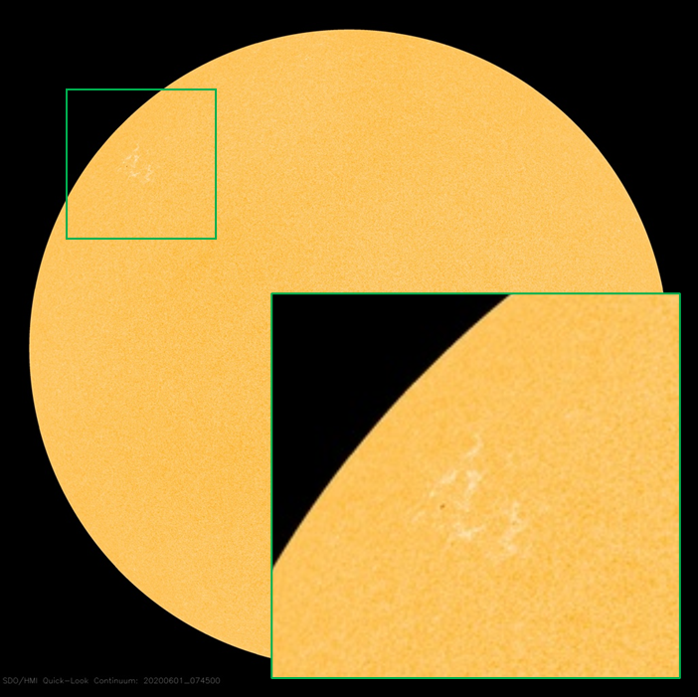During the last months, solar cycle 25 (SC25) has been giving us already a few signs of its gradual awakening, with some small sunspot groups and low-level flaring activity (B-class). So nothing unusual seemed to be in the offing when a new active region well behind the northeastern solar limb started producing some minor flares during the afternoon of 27 May. The location of the bright EUV (extreme ultraviolet) patch near +35 degrees latitude indicated it belonged to the new solar cycle.
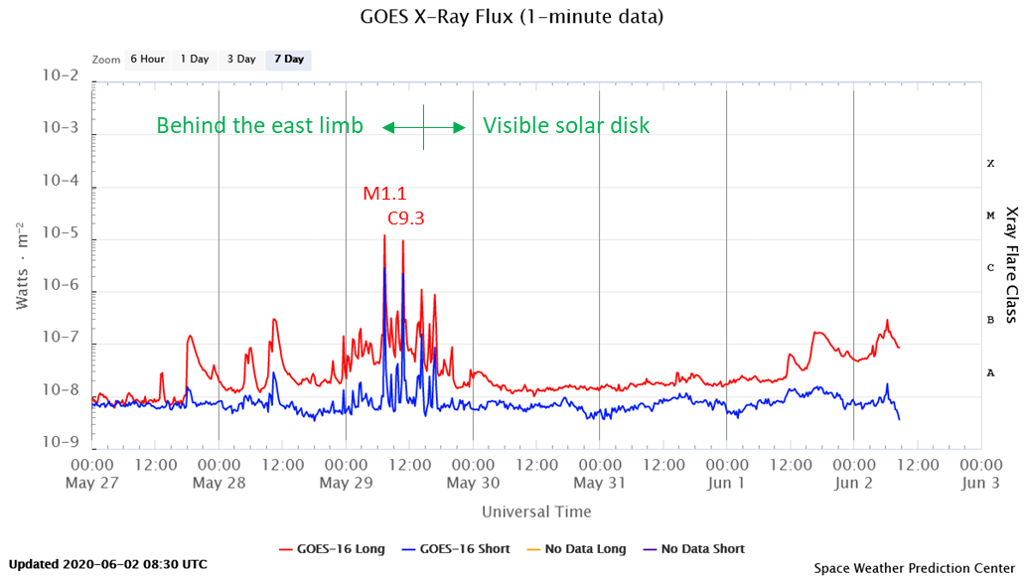
Then on 29 May the region, while still behind the solar limb, shifted its activity into a higher gear producing an M1.1 flare at 07:24UT and a C9.3 flare near 10:46UT (see the annotated GOES-16 x-ray flux curve above). This was the first M-class (M as in "moderate") event since 20 October 2017. The eruptions were associated with some weak radio-bursts, as detected by the radioastronomy station in Humain.
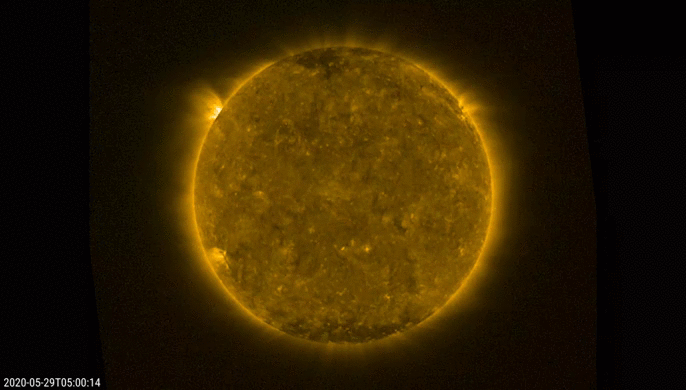
A view on the M1 and C9 flare as seen by PROBA2/SWAP (image).

The EIT waves (as seen by PROBA2/SWAP) can be seen particularly well in difference images (one image substracted from the previous).
The PROBA2/SWAP camera revealed some EIT waves moving along the eastern limb mainly to the south. These are bright wave fronts that can be seen propagating through the corona (Sun's hot atmosphere) and are associated with coronal mass ejections (CMEs). This STCE newsitem provides more info on these waves. STEREO-A had the best view on the eruptions and in particular these EIT waves, as its current location is very near the solar east limb as seen from Earth. From the point of view of STEREO-A, it means that the active region was close to its central meridian (see imagery below). The dynamic and relatively bright fronts of the EIT waves can easily be seen in imagery by STEREO-A's EUVI instrument - also an EUV camera.
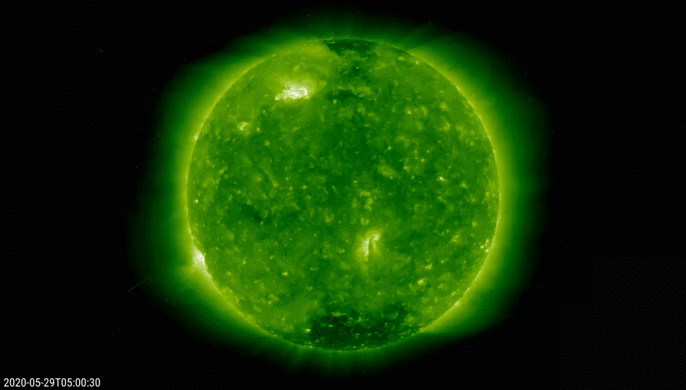
A view on the M1 and C9 flares as seen by STEREO-A/EUVI (image). The source is the bright region in the northern solar hemisphere very close to the central meridian.
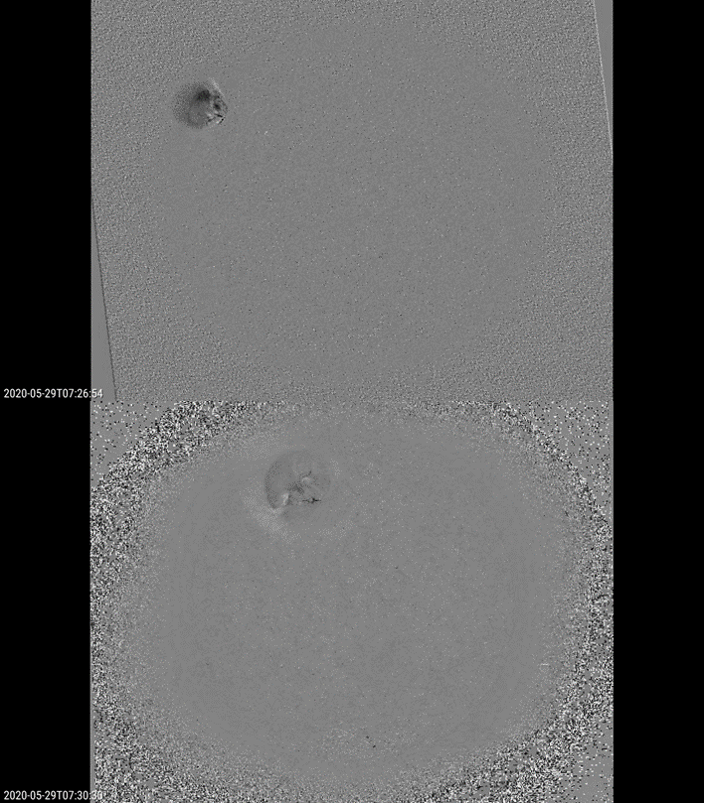
A view on the EIT wave shortly after the M1 flare as seen by by PROBA2 (top) and STEREO-A (bottom). The difference in size is from image handling and a 4 minute delay between the two images.
Not only the strength of the two flaring events are very similar, also the outlook of both eruptions was a close match. The SUVI instrument (Solar Ultraviolet Imager) onboard the GOES-16 satellite recorded some impressive images from these eruptions (below). In both instances, the event starts out as the typical balloon-like eruption billowing away from the Sun. The imagery then clearly shows how the northern part seems to bump into the fanning, overarching magnetic field of the Sun's northern polar coronal hole, getting deflected towards the east ("left") as if it had hit a brick wall. Consequently also the resulting CMEs had a very similar (and very deformed) outlook, as can be seen in the SOHO/LASCO C2 images.

The initial ejection and the deflected stage as seen by the GOES-16/SUVI instrument (annotated version).
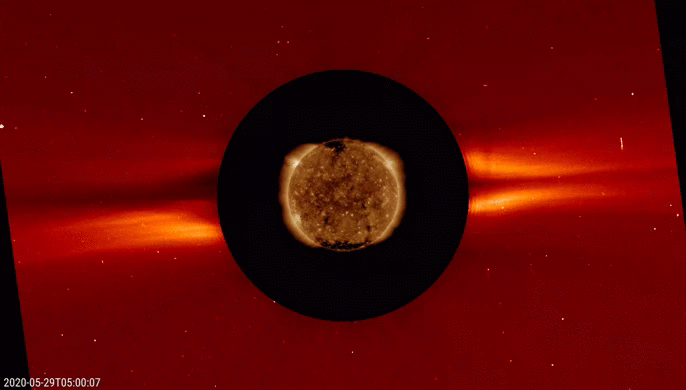
Coronagraphic image of the CME associated with the C9 flare as seen by SOHO/LASCO C2 (difference image).
When the region had finally rotated over the east limb, only a very small spot was remaining, barely visible even in larger telescopes (see SDO/HMI imagery and inset below). The region got finally numberered on 1 June as NOAA 2764. As can be seen in the GOES-16 x-ray flux curve, all activity had died down by then.
